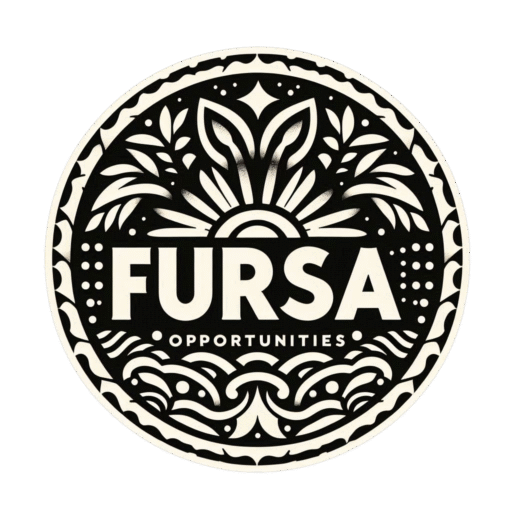Why you should have at least two distinct CV formats ? Having a single CV format for all job applications is like using a hammer for every carpentry task – sometimes it works, but often you’re better off with a screwdriver or a chisel. In today’s job market, where applications are screened by both automated systems and human eyes, tailoring your CV to the specific reader is not just a good idea, it’s a strategic necessity.
That’s why you should absolutely have at least two distinct CV formats: one optimized for Applicant Tracking Systems (ATS) and another crafted for the human reader.
Why Two CV Formats? Because Your Audience Matters!
Think about it: an ATS is a piece of software designed to scan, parse, and rank CVs based on keywords and formatting rules. A human recruiter, on the other hand, is looking for a compelling narrative, clear achievements, and an overall impression of your suitability for the role. These are fundamentally different objectives, requiring different approaches.
CV Format 1: The ATS-Friendly Powerhouse
Your ATS-friendly CV is built for machines. Its primary goal is to get past the initial digital gatekeepers and into the hands of a human.
Key characteristics of an ATS-optimized CV:
- Keyword Rich: This is paramount. Scour the job description for exact keywords and phrases and strategically weave them into your CV. Think about synonyms and related terms too.
- Simple & Standard Formatting: Avoid fancy graphics, complex tables, intricate headers/footers, or unusual fonts. Stick to standard, clean layouts that ATS can easily parse. Use common section headings like “Experience,” “Education,” and “Skills.”
- Clear Headings: Use standard, easily recognizable headings for each section.
- Chronological Order: Most ATS prefer a reverse-chronological format for your work history.
- No Obscure File Types: Stick to
.docor.pdf(though.docis often preferred for ATS as it’s easier to parse). - Concise Bullet Points: Use clear, action-oriented bullet points to describe responsibilities and achievements, incorporating keywords.
Why this matters: An ATS will quickly reject CVs that lack relevant keywords or have formatting that it cannot read, regardless of how qualified you actually are. This is your first hurdle to clear.
CV Format 2: The Human-Readable Masterpiece
Once your CV has cleared the ATS hurdle, it lands in the hands of a human recruiter or hiring manager. This is where your human-readable CV shines. Its purpose is to tell your story, highlight your impact, and make a memorable impression.
Key characteristics of a human-readable CV:
- Visually Appealing & Easy to Scan: While still professional, you can incorporate a touch more design (think clean lines, appropriate white space, and a well-chosen font that is easy on the eyes). The goal is readability and visual appeal.
- Compelling Summary/Profile: Start with a strong summary or profile that immediately grabs attention and highlights your most relevant skills and achievements.
- Emphasis on Achievements & Impact: Quantify your achievements whenever possible. Instead of just listing responsibilities, explain the impact you had. Use strong action verbs.
- Tailored Content & Storytelling: Beyond keywords, this CV allows you to subtly adjust the narrative to directly address the specific needs and culture of the company you’re applying to. You can highlight soft skills and personality traits that resonate with the job description.
- Slightly More Flexibility in Design: You can use columns (carefully!), incorporate a subtle color accent, or choose a font that is professional but also reflects a bit of your personal brand.
- Proofread Meticulously: Typos and grammatical errors are instant turn-offs for human readers.
Why this matters: This is your chance to differentiate yourself. A well-crafted, engaging CV will make a recruiter want to learn more about you and invite you for an interview.
The Photo on Your CV: A Critical Consideration
The decision of whether or not to include a photo on your CV is perhaps one of the most culturally and contextually sensitive aspects of job applications. There is no universal “right” answer; it depends entirely on where you’re applying and the type of role.
When to ABSOLUTELY AVOID a Photo:
- North America (U.S. and Canada), UK, Ireland, Australia, New Zealand: In these regions, including a photo is generally strongly discouraged and often viewed negatively. Anti-discrimination laws are very strict, and employers go to great lengths to avoid any potential for bias based on appearance, age, gender, or ethnicity. Including a photo can flag your application as unprofessional or even lead to its rejection as companies aim to prevent discrimination claims. ATS systems are also typically not designed to process images, which can cause your application to be misread or discarded.
When a Photo is Expected or Common:
- Many European Countries (e.g., Germany, France, Spain, Belgium, Portugal, Austria, Switzerland), parts of Asia (e.g., Japan, China, India, South Korea, Philippines, though increasingly less common in modern corporations), Middle East (e.g., UAE), and Latin America (e.g., Brazil, Argentina): In these regions, including a professional photo is often standard practice and sometimes even expected. Recruiters may see it as a way to “humanize” the application and provide a more complete picture of the candidate. In some cultures, it’s considered a sign of professionalism and attention to detail.
When a Photo MIGHT be Beneficial (Even if not strictly required):
- Customer-Facing Roles: For jobs where appearance and presentation are integral (e.g., hospitality, sales, public relations, front desk, cabin crew, acting, modeling), a professional photo can be an asset, even in countries where it’s not the norm for all professions.
- Creative Industries: In design, media, or other creative fields, a photo might be included as part of a more visually driven portfolio, though it should still be professional.
If You Decide to Include a Photo (Where Appropriate):
- Professional Headshot Only: This is non-negotiable. It should be a clear, well-lit, professional head-and-shoulders shot. No selfies, vacation photos, casual snapshots, or group pictures.
- Appropriate Attire: Dress as you would for a professional interview for that specific role/industry.
- Neutral Background: A plain, light-colored background is best.
- Smile Naturally: A warm, confident, and approachable expression is generally preferred over a stoic one.
- Placement: Typically, a small photo is placed in the top right or left corner of the CV, next to your contact information.
- Consider ATS: Be aware that even if a human reader expects a photo, an ATS might still struggle with it. If you’re submitting to an online portal that heavily relies on ATS, you might choose to omit the photo in that specific ATS-friendly version, even if you have one for direct human review.
When to Use Which?
The general rule of thumb is:
- Always assume an ATS is involved first for online applications, and therefore, often, no photo. Start with your ATS-friendly CV, which is typically free of photos and complex graphics to ensure it’s parsed correctly.
- If you are emailing a recruiter directly, networking, applying through a less formal channel (like a LinkedIn message to a hiring manager), or applying in a country/industry where photos are standard, use your human-readable CV which may include a photo. This is where you can make a direct, personal connection.
- Crucially: Research the cultural norms of the country and the specific industry you are applying to. A quick online search for “[Country Name] CV photo etiquette” or “[Industry Name] CV photo advice” will provide invaluable guidance. When in doubt, it’s usually safer to omit the photo, especially in regions known for strong anti-discrimination policies.
The Takeaway
Investing the time to create and maintain two distinct CV formats, and critically assessing the role of a photo in your application, is not extra work; it’s a strategic move that significantly boosts your chances of success in today’s competitive job market. By speaking the language of both machines and humans, and understanding the nuances of global hiring practices, you ensure your qualifications are seen and your story is heard. Don’t leave your job search to chance – arm yourself with the right tools for every opportunity!
See also: 5 Common CV Mistakes and How to Fix Them Instantly
See also: The Ultimate CV Checklist: 10 Things Recruiters Look For
Check out: Is Your Fancy CV Background Sabotaging Your Job Search?

